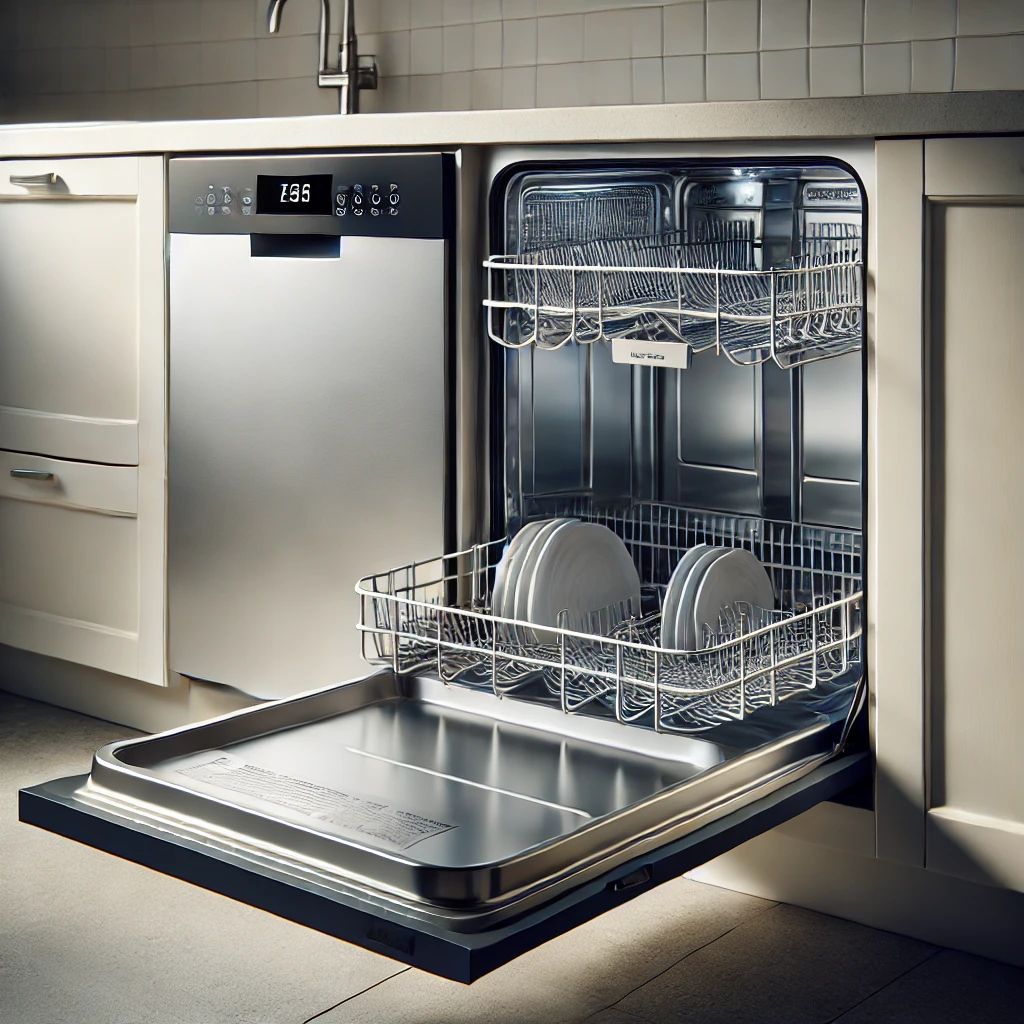
Why Won't Your Dishwasher Spray Water? Find Out!
A dishwasher that isn’t spraying water effectively won’t clean your dishes properly, leading to frustration and additional cleaning. Several factors can cause this issue, from clogs to motor problems. Here’s a guide to help you troubleshoot why your dishwasher might not be spraying water and how to fix it.
1. Clogged Spray Arms
The spray arms in a dishwasher are responsible for distributing water evenly over the dishes. If the spray arm holes become blocked by food particles or mineral deposits, they won’t spray water effectively.
How to Fix It:
- Remove and Inspect the Spray Arms: Most spray arms can be detached by hand or with a screwdriver. Check for visible blockages.
- Clean the Spray Arm Holes: Use a toothpick or a small brush to clear any debris from the holes. Rinse the spray arm under warm water to remove any remaining particles.
- Reattach and Test: After cleaning, reattach the spray arms and run a cycle to check if the water sprays effectively.
Tip: Regularly clean the spray arms to prevent future clogs, especially if you live in a hard water area.
2. Low Water Pressure
Dishwashers rely on a strong water flow from your home’s water supply. If water pressure is too low, there might not be enough force to power the spray arms.
How to Check and Fix It:
- Check Your Home’s Water Pressure: You can test your home’s water pressure using a water pressure gauge. Most dishwashers require at least 20 PSI to operate effectively.
- Inspect the Water Inlet Valve: If the water pressure is sufficient, but the dishwasher still isn’t spraying, the inlet valve might be clogged or faulty. This valve controls the flow of water into the machine.
- Replace if Necessary: If the inlet valve is faulty, it may need to be replaced. Consult your dishwasher’s manual for instructions or consider hiring a technician.
Tip: Keep the water supply valve fully open to ensure adequate water flow to the dishwasher.
3. Blocked or Faulty Circulation Pump
The circulation pump powers water through the spray arms. If this pump is clogged or malfunctioning, the dishwasher may not spray water effectively.
How to Fix It:
- Inspect the Pump for Debris: Locate the circulation pump (usually beneath the spray arm) and check for any debris or blockages.
- Listen for Unusual Sounds: A malfunctioning pump might make strange noises, like humming or grinding. If you hear these sounds, the pump could be damaged.
- Replace the Pump: If the pump is faulty, you may need to replace it. This can be a complex repair, so consider hiring a technician.
Tip: Regularly clean the dishwasher to prevent debris from reaching the circulation pump and causing blockages.
4. Faulty or Clogged Water Inlet Valve
The water inlet valve controls the amount of water entering the dishwasher. If this valve is blocked or broken, the dishwasher might not get enough water to spray.
How to Check and Fix It:
- Locate and Inspect the Valve: The water inlet valve is usually located behind the bottom front panel of the dishwasher. Look for signs of clogging or damage.
- Test for Continuity: Use a multimeter to test the valve for electrical continuity. If it doesn’t show continuity, it’s likely faulty and needs to be replaced.
- Clean or Replace the Valve: If there’s any visible debris, clean it. If the valve is damaged, replace it according to the manufacturer’s instructions.
5. Door Switch Malfunction
The door switch prevents the dishwasher from operating if the door isn’t fully closed. A faulty door switch might prevent the dishwasher from spraying water, as it may think the door is open.
How to Check and Fix It:
- Inspect the Door Latch: Check if the door latch is working correctly and that the door is fully closing and latching.
- Test the Door Switch: Use a multimeter to check the door switch for continuity. If it doesn’t have continuity, the switch may need to be replaced.
- Replace the Switch: If the door switch is faulty, replace it following the manufacturer’s instructions.
Tip: Make sure the door closes tightly before each wash cycle to avoid switch issues.
6. Overfilled Dishwasher Detergent
Using too much detergent or the wrong type of detergent can create excessive suds, which may interfere with the dishwasher’s spray function.
How to Fix It:
- Use the Recommended Amount: Check the manufacturer’s guidelines for the correct amount of detergent.
- Clear Excess Suds: If there are excessive suds, run a rinse cycle without detergent to clear them out.
- Use Dishwasher-Specific Detergent: Only use detergents specifically designed for dishwashers to prevent over-sudsing.
Tip: Avoid using regular dish soap, as it creates too many suds and can lead to performance issues.
7. Faulty Motor or Motor Relay
The motor powers the circulation pump, and if it fails, the pump won’t function, and water won’t spray. The motor relay, which controls power to the motor, can also fail.
How to Fix It:
- Listen for Motor Sounds: If the dishwasher is completely silent during the wash cycle, it might indicate a motor issue.
- Test the Motor Relay: Use a multimeter to check the motor relay for continuity. If the relay doesn’t have continuity, it will need replacement.
- Replace the Motor: If the motor itself is faulty, it’s best to consult a technician for replacement, as it’s a complex repair.
Tip: Regular maintenance, like cleaning filters and spray arms, can help prevent motor strain and extend its life.
Conclusion
If your dishwasher isn’t spraying water, the issue could range from simple clogs to more complex component failures. By following these troubleshooting steps, you can often identify and resolve the problem, keeping your dishwasher running efficiently. Regular maintenance, such as cleaning the spray arms, filters, and inlet valve, can prevent many common issues and prolong the life of your dishwasher.

